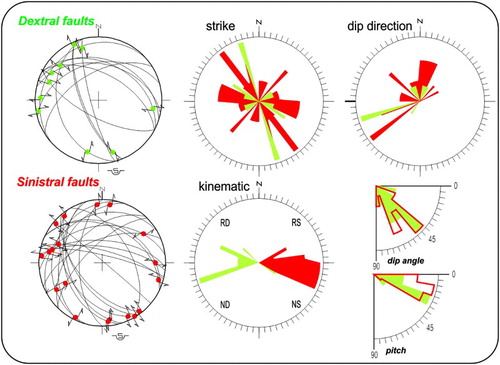Figures & data
Figure 1. Geological setting of the central Southern Alps. (a) Tectonic scheme. (b) Schematic cross section modified after CitationSchönborn (1992). and (c) Stratigraphic succession of the central Southern Alps after CitationBerra and Siletto (2006). Abbreviations in (a): O-A: Orobic Anticline; TC-A: Trabuchello-Cà Bianca Anticline; CE-A: Cedegolo Anticline; MA-A: Monte Alto Anticline; UC in (a): Upper Cretaceous. Abbreviations in (c): BRE: Breno Fm.; GOR: Gorno Fm.; MDB: Bruntino Marls; MEB: Calcare Metallifero Bergamasco; SGB: San Giovanni Bianco Fm.; VSB: Arenarie di Val Sabbia.
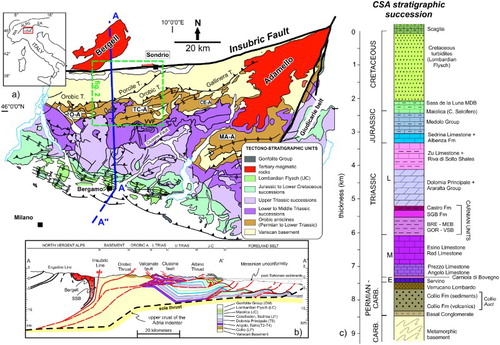
Figure 2. Detailed tectonic scheme of the central Southern Alps in the area surrounding the San Marco pass. Redrawn after CitationCasati and Gnaccolini (1967) and CitationForcella and Jadoul (2000). IF: Insubric Fault; O-A: Orobic Anticline; OT: Orobic Thrust; PT: Porcile Thrust; TC-A: Trabuchello-Cabianca Anticline. The extent of the geological-structural Main Map is highlighted in red. Numbered green circles are sites of structural analyses: data are reported in .
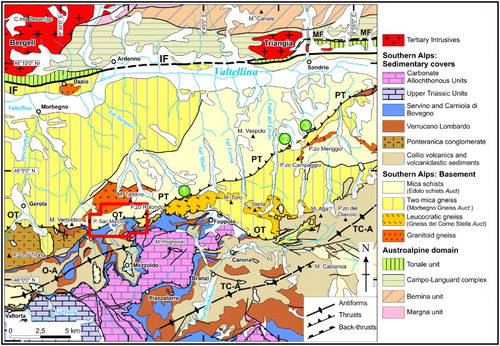
Figure 3. Panoramic view of the Orobic Thrust toward Passo Verrobbio, from Rifugio San Marco 2000. Mcs: mica schists; PNT: Ponteranica Conglomerates; SERV: Servino; VER: Verrucano Lombardo.
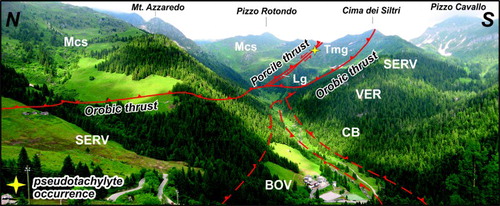
Figure 4. The Orobic-Porcile thrusts junction between Monte Azzaredo and Cima dei Siltri. The yellow star mark the occurence of pseudotachylyes along the fault zone. BOV: Carniola di Bovegno; CB: Monte Cabianca Volcanites; Mcs: mica schists; Lg: leucocratic gneiss; SERV: Servino; Tmg: two-mica gneiss; VER: Verrucano Lombardo. Arrows along the Porcile thrust indicate the late-stage sinistral transpression.
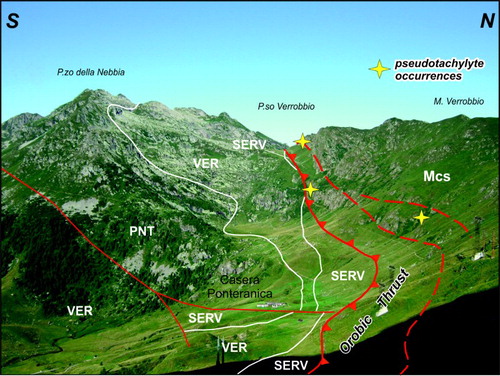
Figure 5. (a) Alpine folds in the micaschists, W of Stalla Bressano; (b) a strongly deformed slices of Servino with S-verging D3 folds, Pra del Muto; (c) the upper part of the Orobic Thrust fault zone, along the road ca. 500 m S of Passo San Marco; (d) detail of image (c), the mylonitic foliation crosscuts the regional S2 foliation in mica schists; (e) pseudotachylyte veins within cataclasites, Orobic Thrust, first hairpin turn S of Pass San Marco; and (f) a thick pseudotachylyte vein laden with clasts of quartz and plagioclase, ridge between Cima dei Siltri e Pizzo Rotondo.
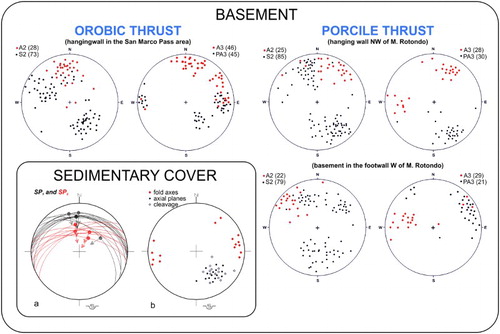
Figure 6. Sketch of the crosscutting relationships among the S2 foliation, mylonites, pseudotachylyte veins and later brittle structure.

Figure 7. Stereographic projections (equal area, lower hemisphere) of structures related to the D2 and D3 deformation phase. Discrete reverse shear planes that postdate major thrusting occur both in the sedimentary cover and within the fault zone (see ).
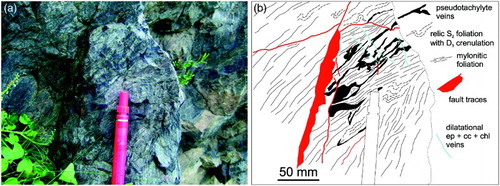
Figure 8. Stereographic projections (equal area, lower hemisphere) of fault slip data set for the Orobic (a) and Porcile and (b) thrust.
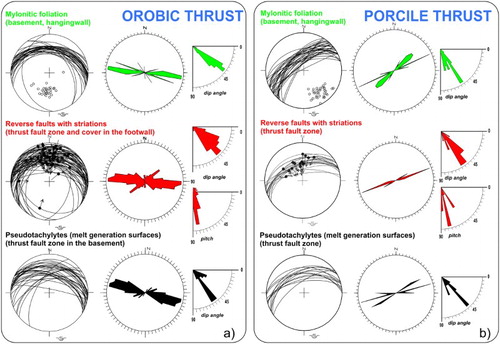
Figure 9. Regional stress obtained by inversion of fault slip data (CitationAngelier, 1990). Location of measurement sites is reported in .
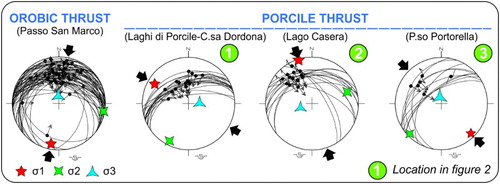
Figure 10. Oligocene (?) re-activation of fault zones in response of the dextral transpressive activity of the Insubric Fault.
